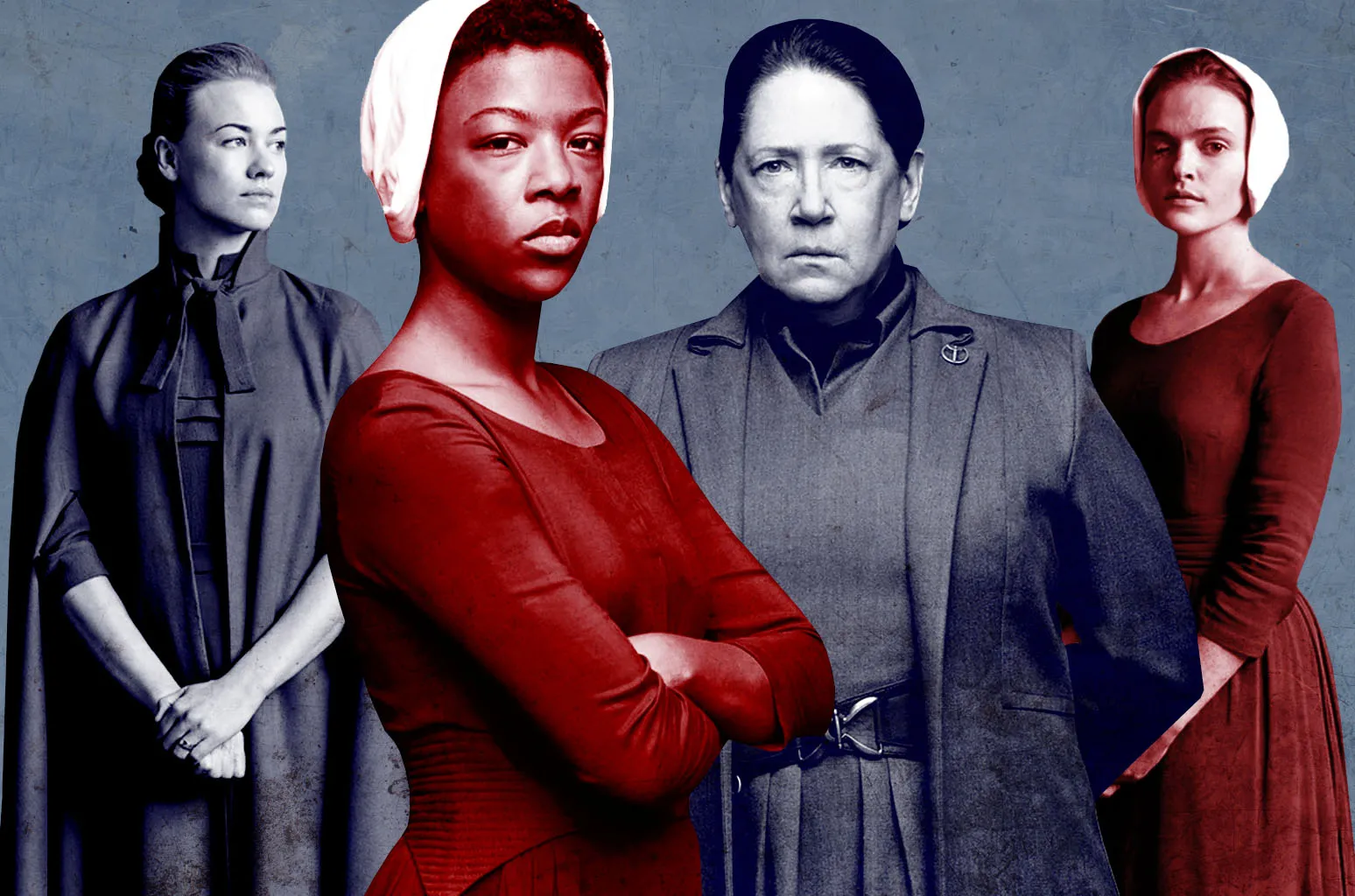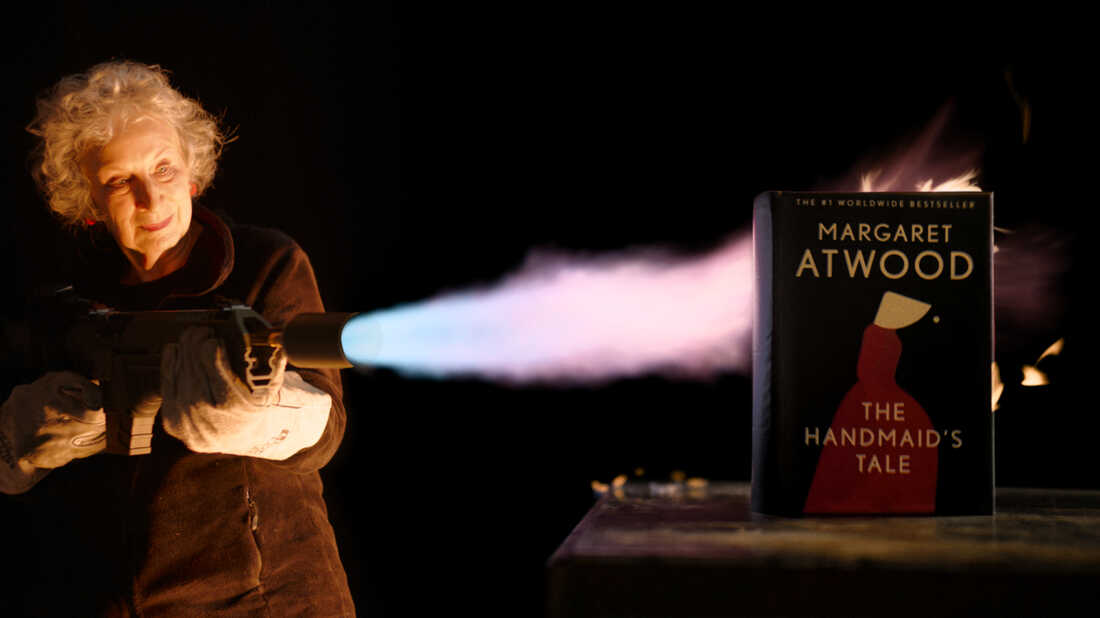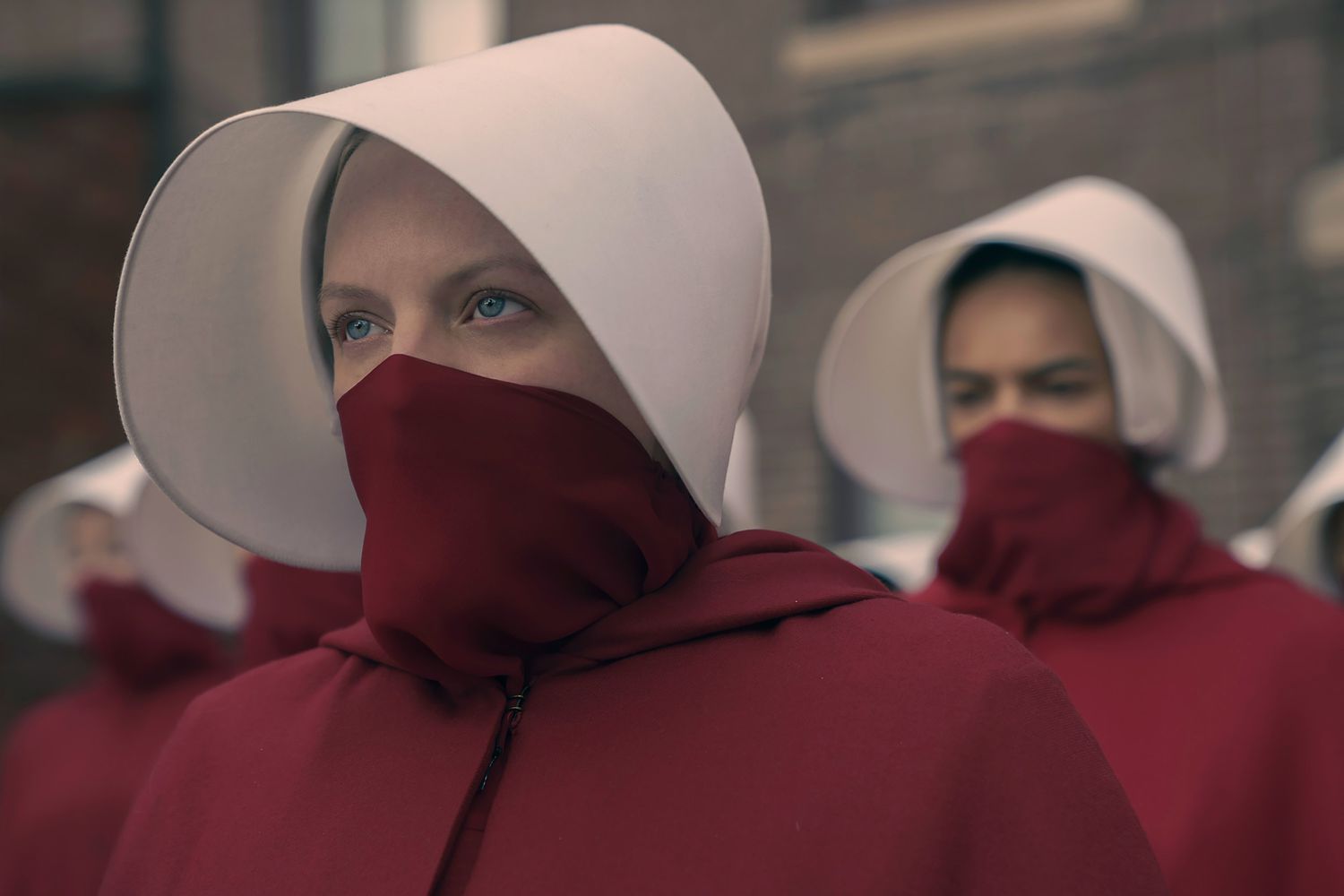By Katerina Valouxi,
When “The Handmaid’s Tale” came out in 1985 it was an immediate critical and commercial success, despite the cruel, dystopian world it depicted. The book showcased a future America where the totalitarian government has stripped all women off of their human and reproductive rights, in a society that is dictated by religion and strict patriarchal norms. Being quite different from Margaret Atwood’s previous works, the novel stirred up reactions, but Atwood firmly stated that everything she had written about was true at some point in history. The difference this time was that the totalitarian regime in this dystopian America was attacking white women.
The book describes a society in which all women suddenly find themselves imprisoned and ranked according to their fertility. The Handmaids, the ones who can bear children, are clearly at the bottom, used and exploited as reproductive machines. Next on the ranking are the Marthas and the Aunts, infertile women who have acquired the roles of carers, cooks and servants, who also keep the Handmaids disciplined. These women might not be of high social ranking, but they have the most important role in perpetuating the system which they have been indoctrinated in. At the highest level of social hierarchy among women sit the wives of the Commanders, the women who are morally and physically pure and thus worthy to have a man by their side.

In a militarized system that is built on the exploitation of women’s bodies and uses religion as a tool of manipulation, interpersonal relationships are not allowed –every movement, word and idea is under surveillance. When the TV show adaptation of “The Handmaid’s Tale” came out in 2017, it had the same critical and commercial success that the book had in 1985. People were shocked by the gruesome images of power over white female bodies, women were suddenly outraged and scared because of the depiction of a system that threatened their very own freedom and autonomy. In the novel, the handmaids are constantly being forced to listen to and recite scriptures, but they are not allowed to read the Bible. Genesis 30 – “And she said, Behold my maid Bilhah, go in unto her; and she shall bear upon my knees, that I may also have children by her” is recited in the ceremony in which the man ritually rapes the Handmaid in his wife’s presence, in order to impregnate her so she can bear his offspring.
Parts of Atwood’s dystopian world have existed before in history. Some aspects of the story are reminiscent of the biological determinism that prevailed in 1930’s Germany. In 1935, with Germany’s birth rates dropping, Hitler’s right-hand man Heinrich Himmler created the “Lebensborn program” which was designed to promote the “Aryan future”. Besides kidnapping blue-eyed and blond-haired children in order to create the Nazi “Third Reich”, another part of the program involved members of the SS impregnating physically suitable women so that they could bear physically “perfect” children.
However, for women of color and marginalized women across the world, the sexual exploitation and lack of bodily agency shown in “The Handmaid’s Tale” has been, and for some still is, a reality. The examples are almost too many to count –from the slave trade and the American slave plantations, where black women were constantly used and humiliated by their masters, to present day Saudi Arabia where most women are not allowed to vote, drive, study, travel, or have relations with the opposite sex without being supervised by a male guardian. In Afghanistan, proper education has been denied to women since 2021, when the Taliban came back in power and indefinitely banned university education for women, following the ban of secondary education for girls. Moreover, female genital mutilation is another degrading and exploitative practice that is showcased in the handmaids’ story. The World Health Organization defines FGM as “the partial or total removal of external female genitalia or other injuries to the female genital organs for non-medical reasons”, which is carried out on young girls before the age of 15, and has affected more than 200 million women in 31 countries in Africa, the Middle East, and Asia.

A white American woman’s worst nightmare was always another woman’s reality. However, things got turned upside down in the supposed land of freedom when Roe v Wade was overturned in the 2022 Dobbs v Jackson Women’s Health Organization ruling. A landmark in women’s fight for bodily autonomy, Roe v Wade was established in 1973 and secured a woman’s right to abortion. After the decision was overturned, 12 states started enforcing bans on abortion at all stages of pregnancy and three others banned abortion after six weeks. Even in the states where abortion is legal, the procedure is limited when the fetus has reached 24 weeks. Because of these decisions, certain states have even added protections and abortion shield laws in order to make sure that both patients and providers are safer.
However, Trump’s election affected the situation even more. The Trump administration has already stopped funding Title X, the only federal program that provides American people with various family planning and reproductive healthcare services like birth control, infertility services, treatment for sexually transmitted infections (STIs), breast and cervical cancer screenings and more. But the scariest only follows- within just a few hours of taking office, the Trump administration started erasing information on how to access reproductive health from government websites like the Department of Health and Human Services website and also took down ReproductiveRights.gov.

Just a few months ago in the state of Georgia, Adriana Smith, a pregnant 30-year-old mother was declared brain dead in February after having blood clots in her brain. Despite being considered legally dead, the doctors in Emory University Hospital have kept her on life support for three months and will continue to do so until the baby is born, due to Georgia’s strict anti-abortion laws that ban abortion usually around six weeks into the pregnancy, after cardiac activity can be detected in the fetus. Of course, Adriana Smith also happens to be black. An identical scene can be found in “The Handmaid’s Tale” TV show, on an episode in which a woman is kept alive through tubes and breathing devices despite being in a vegetative state, in order for her fetus to survive.
Who is really bound to decide whether a woman should be used like this when she does not even actively exist, when she can not possibly have a say in anything regarding her own body? With Trump’s government being just around the corner and the West’s descent towards fascist ideologies that only restrict women’s bodily agency, one can’t help but wonder; are we about to enter a dystopian era of Handmaids, Aunts and Commanders? Why do we really start caring about women’s rights when we realize that colored and non-heteronormative women’s problems may be closer to us than we think? Margaret Atwood warned us; “One of my rules was that I would not put any events into the book that had not already happened. No imaginary gizmos, no imaginary laws, no imaginary atrocities. God is in the details, they say. So is the Devil.”
References
- Dystopian Fantasy? The Handmaid’s Tale Is Based Entirely on Real History. BBC Three. Available here
- Pregnant US Woman Declared Brain Dead Is Being Kept Alive under State Abortion Law. The Guardian. Available here
- Tracking Abortion Bans across the Country. The New York Times. Available here
- Trump’s First 100 Days: 5 Attacks on Reproductive Rights You Might Have Missed | Center for Reproductive Rights. Center for Reproductive Rights. Available here
- Handmaid’s Tale: Dystopian Future or Existing Reality? Rights of equality. Available here




